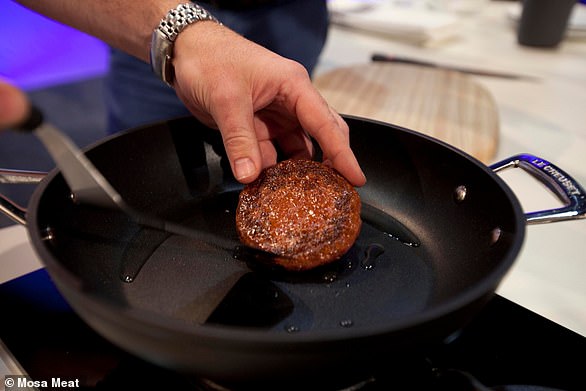Would you like to see the menu… of the future? From cricket salad to ‘water plant’ spaghetti: AI images show what meals could look like in thirty years if we have to eat ‘sustainably’ to help save the planet
Ultra-realistic images created by AI show what your dinner could look like in 30 years if we are forced to eat ‘sustainably’.
Experts have used AI tool Midjourney to bring 2054’s menu to life, featuring bizarre dishes such as cricket salad and lab-grown steaks.
There are even green spaghetti and ‘meatballs’ made from an aquatic plant, which look straight out of the kitchen of another galaxy.
These unusual creations could replace family favorite dishes such as the traditional Sunday roast or fish and chips, the scientists think.
They have a lower carbon footprint than such classics, meaning they could help in the fight against climate change – but would you eat them?
Fancy a cricket salad? Insects are said to be full of protein and offer a more sustainable alternative to red meat and poultry. The photo shows an AI-generated image of what this could look like
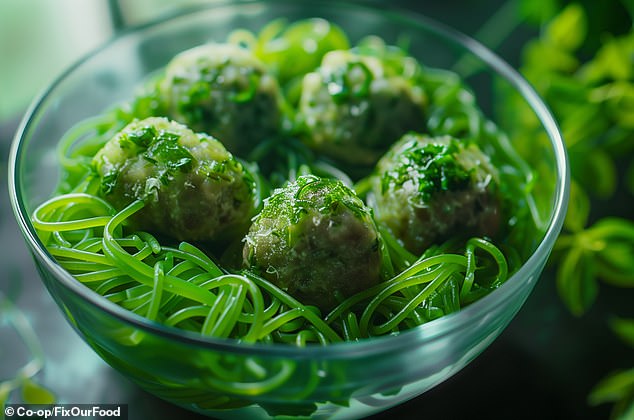
Expanded plant breeding will welcome new varieties that are not currently widely known, such as the fast-growing freshwater fern azolla used for soups, salads and even hamburgers. Pictured: azolla spaghetti and ‘meatballs’ as suggested by AI
The images were created with Midjourney by a team of experts from FixOurFood, a research program led by the University of York, and British retailer Co-op.
“Over the past thirty years we have seen scientific leaps towards more sustainable products that were unthinkable to most people in 1994,” says Bob Doherty, director of FixOurFood.
‘From lab-grown meat to vertical farming, the future of food will revolutionize the way we eat.’
INSECTS
Because research shows that red meat and dairy are responsible for a large part of greenhouse gas emissions, experts think that insects will be a good alternative.
Crickets, worms and ants are environmentally friendly because they take up fewer natural resources than livestock farming and are also a healthy alternative to meat.
They are already being touted as the next ‘superfood’ because they are packed with protein, nutrients, potassium, magnesium and three times more fatty acids than omega-3 in salmon.
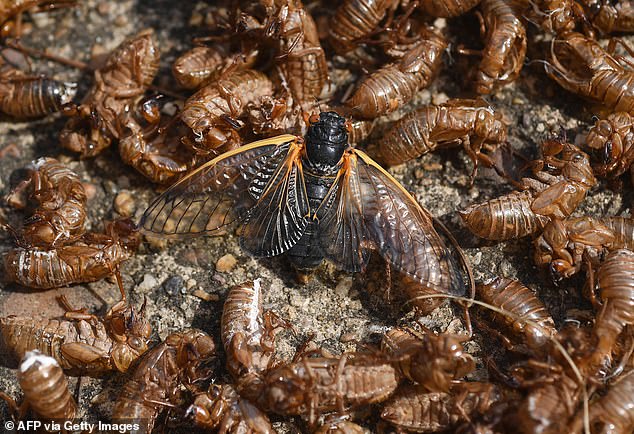
Alternative insect proteins, including grasshoppers, locusts and crickets, can be part of our daily diet, either as a snack or as the protein element of a main meal (photo, crickets in file photo)
The experts at FixOurFood suggest that in addition to crickets, we will also be feasting on grasshoppers, grasshoppers and even termites, known for the damage they cause to buildings.
Meanwhile, restaurants in the US are serving crickets, the noisy insect currently swarming the Southern states.
“By 2054, Britons will have edible insects on their plates, and we may see crickets grind faster than whole grains,” Doherty said.
LAB GROWED MEAT
Lab-grown meat still faces legal and regulatory hurdles, but the team believes it will be freely available to buy by 2054.
This futuristic method, also called ‘cultured meat’, offers an alternative to the meat of real animals and tastes more or less the same.
It takes a cell sample from a living animal that is then cultured or ‘cultured’ in the laboratory to create a fleshy mass – using fewer resources and less space.
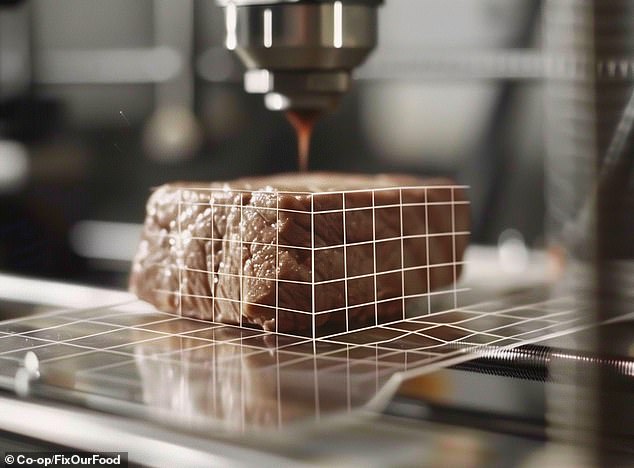
We may even see the introduction of 3D printed food by 2054. Pictured: a 3D printed steak, as imagined by AI
Although lab-grown meat is not yet on the shelves, British scientists are among those growing meat products in a lab with the intention of marketing them.
MailOnline tasted one of the first lab-grown meat products earlier this year: a mini pork sausage, made by Dutch company Meatable.
There’s even a chance that lab-grown meat could be assembled into realistic hamburger or steak shapes by a 3D food printer.
Some industry experts believe that 3D food printers will soon be a common part of kitchen appliances, joining the toaster, microwave and air fryer.
‘WATER PLANT’ SPAG BOL
Although fruits and vegetables have lower emissions than meat, the team is concerned that climate change will reduce the availability of popular options such as avocado.
That’s why they expect unusual plant species to provide an alternative, including the little-known water fern azolla.
Azolla can capture carbon dioxide, a greenhouse gas, from the air, experts at Yale University claim, and may be more climate resilient than your usual vegetables.
It is described by Project Regeneration as having a ‘crispy texture’ and an ‘earthy taste reminiscent of a forest’.
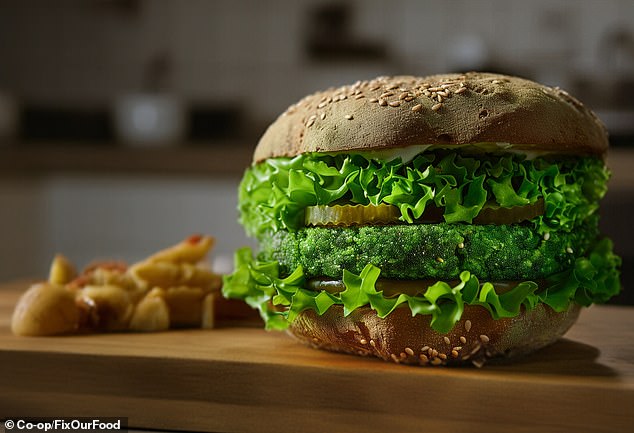
Azolla can be 3D printed in shapes we know, from spaghetti and ‘meatballs’ to hamburgers (photo: azolla burger by AI)
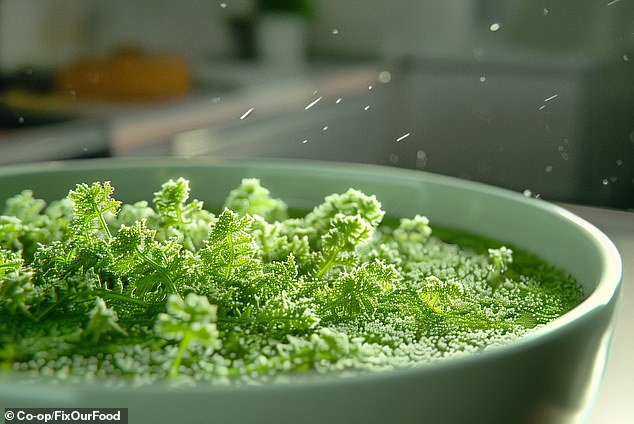
Looks tasty? Fresh azolla is described as having a “crispy texture” and a taste “earthy and reminiscent of a forest” (photo, azolla soup as suggested by AI)
Azolla could also be 3D printed into the shapes we know, from spaghetti and “meatballs” to hamburgers, and even liquefied to make a soup, the AI images show.
The AI images are part of Co-op’s new report which examines the country’s “changing views on food ethics and sustainability” over the past thirty years.
It is claimed that 72 percent of consumers are increasingly concerned about ethical and sustainable food than in recent years – up from 54 percent in 1994.
And the retailer expects this figure to rise even further over the next thirty years.
“Co-op is committed to inspiring healthy, sustainable diets,” the report said.
“As the global climate crisis continues, consumers are increasingly enthusiastic about taking action.”

